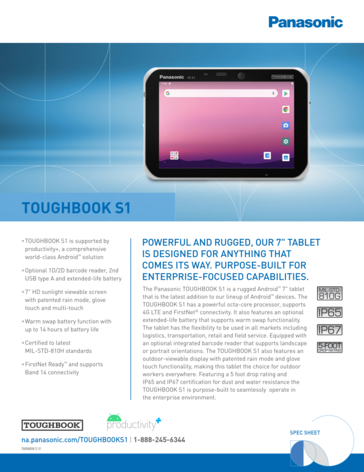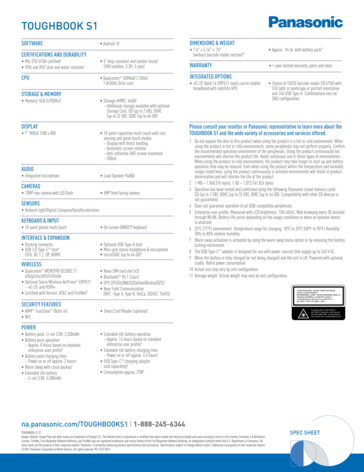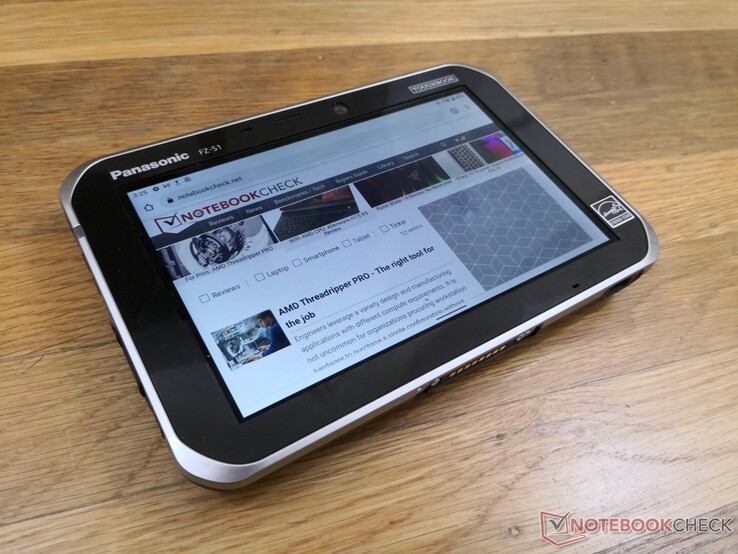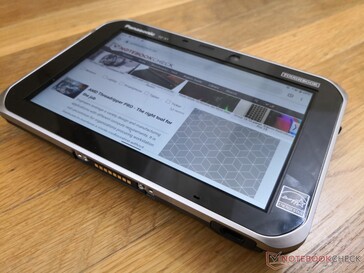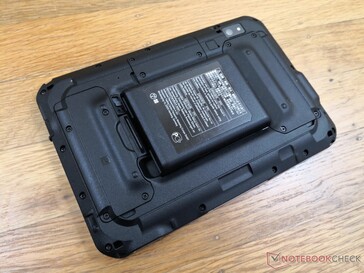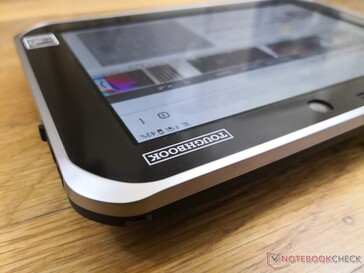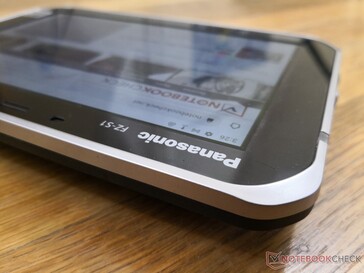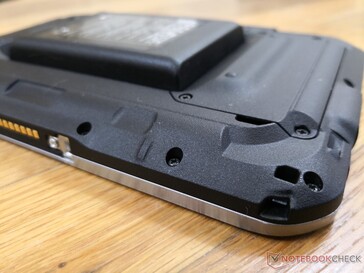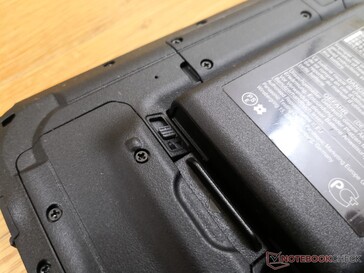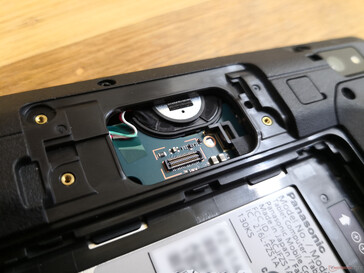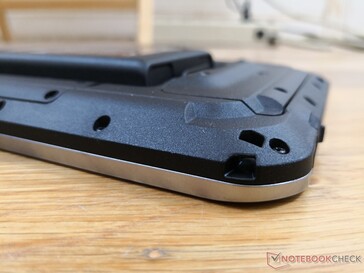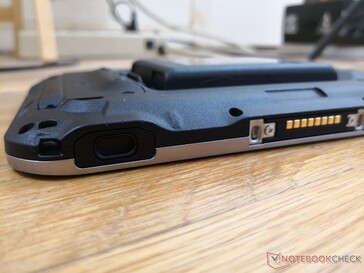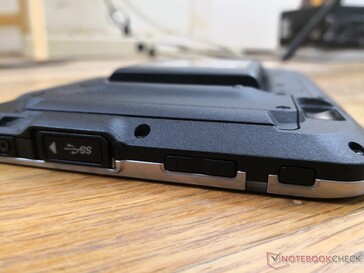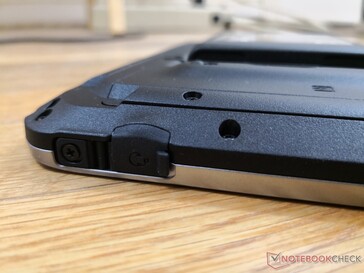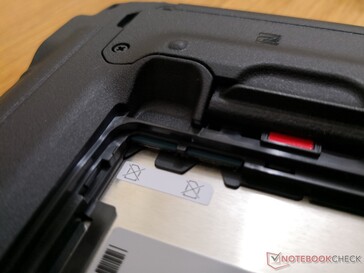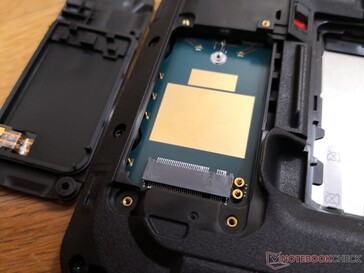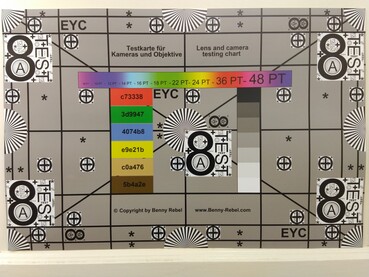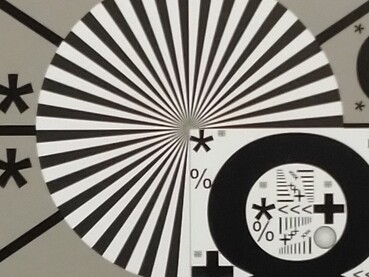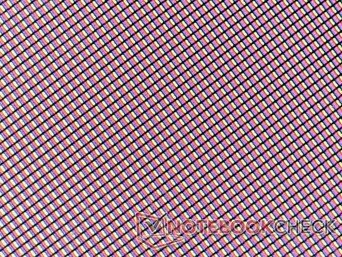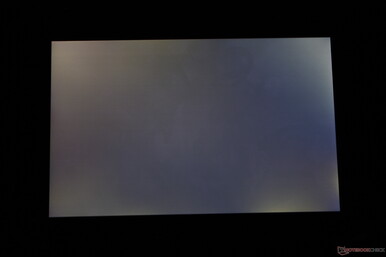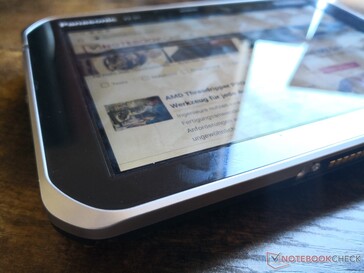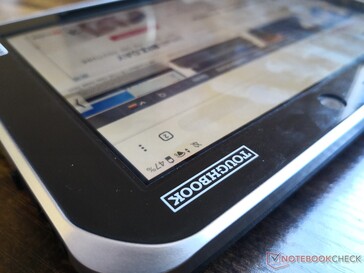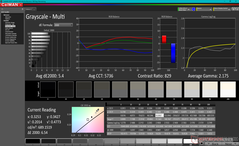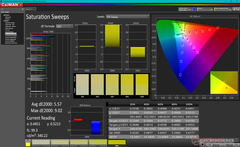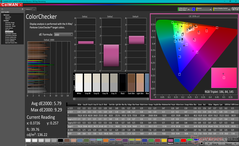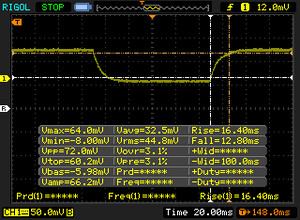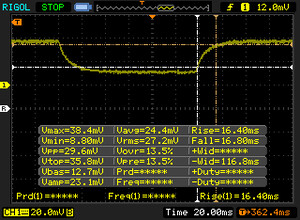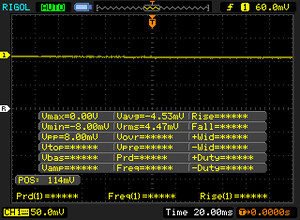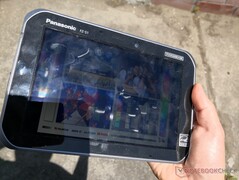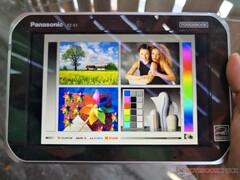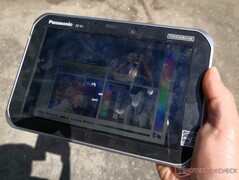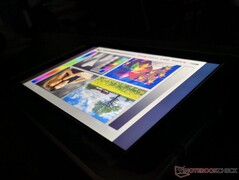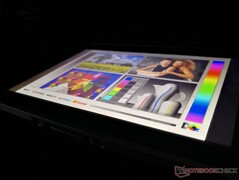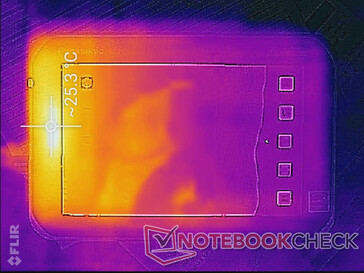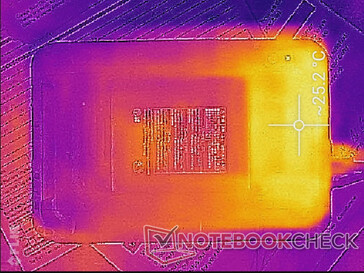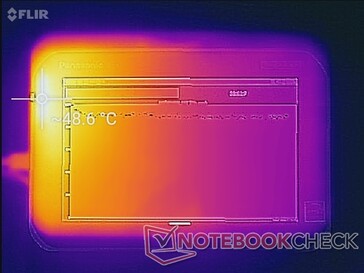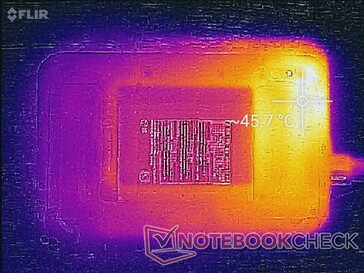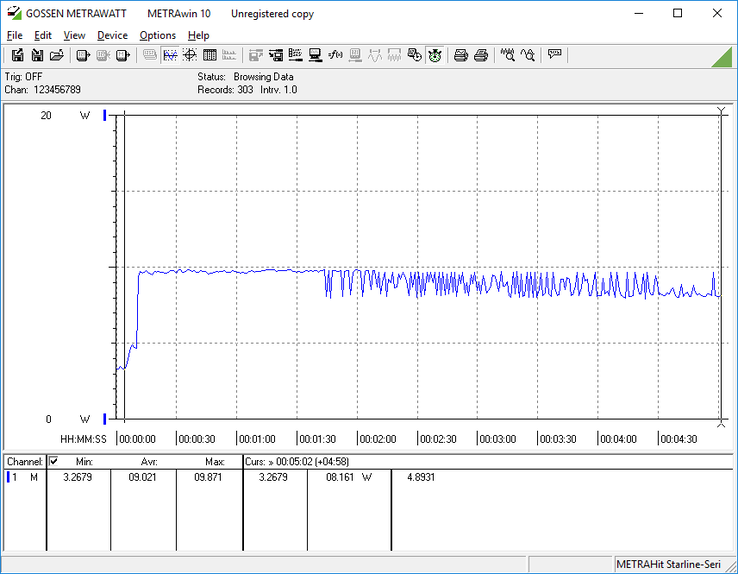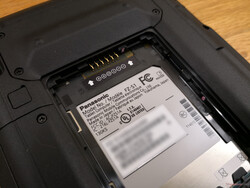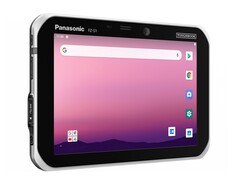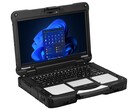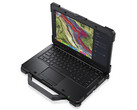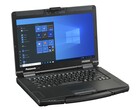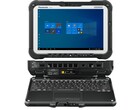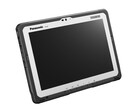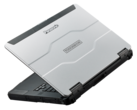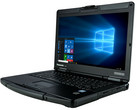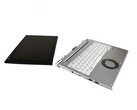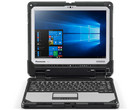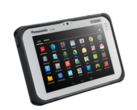Panasonic Toughbook FZ-S1 Rugged Tablet Review: Optimized For The Mobile Workforce

Unveiled late last month, The Toughbook FZ-S1 is Panasonic's latest rugged tablet for commercial or government applications where reliability and versatility are priority over extreme thinness and resolutions. The new FZ-S1 is notable for shipping with Android 10 pre-loaded and for being one the first 7-inch enterprise-grade tablets to support both landscape and portrait orientations.
The Panasonic tablet is packed with features as detailed by the official product page here. Certain third-party online channels are already offering the unit for around $1700 USD or more. Since 7-inch enterprise tablets are relatively rare, we'll be comparing the FZ-S1 to larger models as well as the much older Panasonic Toughpad FZ-B2.
More Panasonic reviews:
potential competitors in comparison
Rating | Date | Model | Weight | Height | Size | Resolution | Price |
|---|---|---|---|---|---|---|---|
v (old) | 07 / 2021 | Panasonic Toughbook FZ-S1 SD 660, Adreno 512 | 503 g | 19.1 mm | 7.00" | 1280x800 | |
| 78.1 % v7 (old) | 07 / 2020 | Panasonic Toughbook FZ-A3 SD 660, Adreno 512 | 930 g | 16.4 mm | 10.10" | 1920x1200 | |
| 82 % v4 (old) | 08 / 2015 | Panasonic Toughpad FZ-B2 N2930, HD Graphics (Bay Trail) | 590 g | 27 mm | 7.00" | 1280x800 | |
v (old) | 07 / 2020 | Durabook R11 i5-8250U, UHD Graphics 620 | 1.2 kg | 20 mm | 11.60" | 1920x1080 | |
v (old) | 09 / 2020 | Acer Enduro T1 ET108-11A A9001 | 499 g | 10.9 mm | 8.00" | 1280x800 |
Case
The case is MIL-STD-810H certified with up to a 5 foot drop onto concrete. Its edges and corners are not rubberized, however, unlike on most other rugged tablets and laptops. The unit is therefore more susceptible to superficial nicks and scratches.
Perhaps the most defining feature of the FZ-S1 is its ability to support proprietary attachments on its back for additional functions such as battery extensions, scanners, docking stations, and more. These accessories are unique to the FZ-S1 and so they are not compatible on any other tablet including those from Panasonic.
Ports
Integrated ports include just a single USB-C port alongside a 3.5 mm headset jack. The USB-C port supports video-out which makes it possible to connect external monitors to the FZ-S1.
Communication
2x2 Wi-Fi 5 comes standard with optional Sierra AirPrime EM7511 4G LTE support. Transfer rates are only about half that of most other Wi-Fi 5 devices.
| Networking | |
| iperf3 transmit AX12 | |
| Panasonic Toughbook FZ-A3 | |
| Durabook R11 | |
| Panasonic Toughbook FZ-S1 | |
| Acer Enduro T1 ET108-11A A9001 | |
| iperf3 receive AX12 | |
| Durabook R11 | |
| Panasonic Toughbook FZ-A3 | |
| Panasonic Toughbook FZ-S1 | |
| Acer Enduro T1 ET108-11A A9001 | |
Webcam
The front 5 MP and rear 13 MP cameras with auto-focus are sharp with minimal graininess or noise issues. Colors, however, are inaccurate and very warm by default.
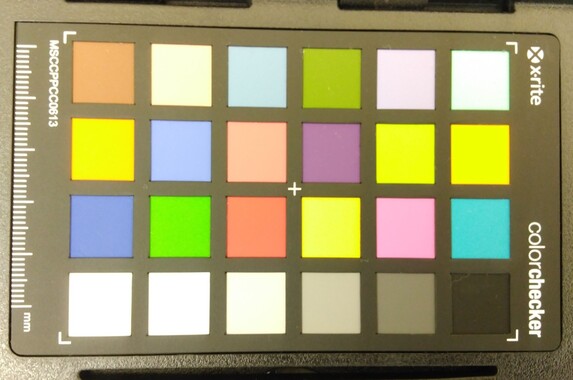
Warranty
A one-year limited manufacturer warranty comes standard instead of the usual three-year to five-year base warranty that is common on professional devices.
Display
Unlike most displays out there with Gorilla Glass protection, the FZ-S1 uses Dragontrail Glass instead. Picture quality is crisp and with almost no graininess issues unlike on some rugged laptops like the Durabook S14I. The disadvantage, however, is the increase in glare from the glossy overlay.
Contrast ratio is decent at about 700:1 and maximum brightness is still much brighter than most regular consumer tablets. In fact, our independent measurements show a maximum brightness of almost 700 nits compared to the manufacturer's advertisement of 500 nits. For an even brighter display, users may want to consider Panasonic's larger FZ-A3.
It's worth noting that the home screen rotates for both Portrait and Landscape orientation which is not always true on other enterprise tablets.
| |||||||||||||||||||||||||
Brightness Distribution: 85 %
Center on Battery: 697.3 cd/m²
Contrast: 758:1 (Black: 0.92 cd/m²)
ΔE ColorChecker Calman: 5.79 | ∀{0.5-29.43 Ø4.78}
ΔE Greyscale Calman: 5.4 | ∀{0.09-98 Ø5}
Gamma: 2.18
CCT: 5736 K
| Panasonic Toughbook FZ-S1 IPS, 7", 1280x800 | Panasonic Toughbook FZ-A3 IPS, 10.1", 1920x1200 | Panasonic Toughpad FZ-B2 IPS, 7", 1280x800 | Durabook R11 BOE5F9, IPS, 11.6", 1920x1080 | Acer Enduro T1 ET108-11A A9001 IPS, 8", 1280x800 | |
|---|---|---|---|---|---|
| Display | |||||
| Display P3 Coverage (%) | 59.3 | ||||
| sRGB Coverage (%) | 82.9 | ||||
| AdobeRGB 1998 Coverage (%) | 60 | ||||
| Response Times | -40% | 30% | -1% | ||
| Response Time Grey 50% / Grey 80% * (ms) | 33.2 ? | 54 ? -63% | 26 ? 22% | 33.6 ? -1% | |
| Response Time Black / White * (ms) | 29.2 ? | 34 ? -16% | 18.4 ? 37% | 29.6 ? -1% | |
| PWM Frequency (Hz) | 193.8 ? | 198.4 ? | |||
| Screen | 22% | -27% | -19% | 10% | |
| Brightness middle (cd/m²) | 697.3 | 1078 55% | 540 -23% | 584.2 -16% | 350 -50% |
| Brightness (cd/m²) | 637 | 1060 66% | 498 -22% | 560 -12% | 353 -45% |
| Brightness Distribution (%) | 85 | 77 -9% | 85 0% | 79 -7% | 92 8% |
| Black Level * (cd/m²) | 0.92 | 0.68 26% | 0.32 65% | 0.52 43% | 0.21 77% |
| Contrast (:1) | 758 | 1585 109% | 1688 123% | 1123 48% | 1667 120% |
| Colorchecker dE 2000 * | 5.79 | 5.94 -3% | 23.34 -303% | 9.29 -60% | 5.68 2% |
| Colorchecker dE 2000 max. * | 9.29 | 12.54 -35% | 14.43 -55% | 10.51 -13% | |
| Greyscale dE 2000 * | 5.4 | 7.2 -33% | 6.82 -26% | 10.6 -96% | 6.3 -17% |
| Gamma | 2.18 101% | 2.17 101% | 2.21 100% | 2.41 91% | 2.12 104% |
| CCT | 5736 113% | 6530 100% | 6334 103% | 6230 104% | 7390 88% |
| Colorchecker dE 2000 calibrated * | 4.72 | ||||
| Color Space (Percent of AdobeRGB 1998) (%) | 53.4 | ||||
| Color Space (Percent of sRGB) (%) | 82.2 | ||||
| Total Average (Program / Settings) | -9% /
10% | -27% /
-27% | 6% /
-10% | 5% /
8% |
* ... smaller is better
X-Rite colorimeter measurements show color temperature to be slightly too warm. Grayscale and color accuracy against sRGB are average with DeltaE values of 5.4 and 5.79, respectively. Of course, color accuracy isn't a huge concern considering the category in question.
Display Response Times
| ↔ Response Time Black to White | ||
|---|---|---|
| 29.2 ms ... rise ↗ and fall ↘ combined | ↗ 16.4 ms rise | |
| ↘ 12.8 ms fall | ||
| The screen shows relatively slow response rates in our tests and may be too slow for gamers. In comparison, all tested devices range from 0.1 (minimum) to 240 (maximum) ms. » 77 % of all devices are better. This means that the measured response time is worse than the average of all tested devices (20.2 ms). | ||
| ↔ Response Time 50% Grey to 80% Grey | ||
| 33.2 ms ... rise ↗ and fall ↘ combined | ↗ 16.4 ms rise | |
| ↘ 16.8 ms fall | ||
| The screen shows slow response rates in our tests and will be unsatisfactory for gamers. In comparison, all tested devices range from 0.165 (minimum) to 636 (maximum) ms. » 44 % of all devices are better. This means that the measured response time is similar to the average of all tested devices (31.6 ms). | ||
Screen Flickering / PWM (Pulse-Width Modulation)
| Screen flickering / PWM not detected | |||
In comparison: 53 % of all tested devices do not use PWM to dim the display. If PWM was detected, an average of 8111 (minimum: 5 - maximum: 343500) Hz was measured. | |||
Glare is almost unavoidable in most scenarios even when under shade as shown by the pictures below. You'll want to set brightness to maximum and avoid direct sunlight when possible for a more comfortable viewing experience.
Performance
The octa-core Qualcomm Snapdragon 660 can also be found on the FZ-A3 for a similar level of performance between them. Graphics performance is about half that of the Snapdragon 750, but it's still sufficient for relatively smooth UI scrolling and web browsing. Most applications take a couple of seconds to launch and so the experience isn't as instantaneous when compared to flagship consumer tablets.
We hope to see higher native refresh rates and sampling rates on future models to boost responsiveness even more.
GFXBench: on screen Aztec Ruins High Tier Onscreen | 2560x1440 Aztec Ruins High Tier Offscreen | on screen Aztec Ruins Normal Tier Onscreen | 1920x1080 Aztec Ruins Normal Tier Offscreen
3DMark: 2560x1440 Sling Shot Extreme (ES 3.1) Unlimited | 2560x1440 Sling Shot Extreme (ES 3.1) Unlimited Graphics | 2560x1440 Sling Shot Extreme (ES 3.1) Unlimited Physics
WebXPRT 3: Overall
PCMark for Android: Work 3.0
| Geekbench 5.5 / OpenCL Score | |
| OnePlus 9 | |
| Oppo Find X3 Neo | |
| Samsung Galaxy A52 5G | |
| Realme 8 Pro | |
| Infinix Hot 10S | |
| Panasonic Toughbook FZ-S1 | |
| Motorola Moto G30 | |
| Motorola Moto G10 | |
| PCMark for Android / Work 3.0 | |
| Panasonic Toughbook FZ-S1 | |
GFXBench: on screen Aztec Ruins High Tier Onscreen | 2560x1440 Aztec Ruins High Tier Offscreen | on screen Aztec Ruins Normal Tier Onscreen | 1920x1080 Aztec Ruins Normal Tier Offscreen
3DMark: 2560x1440 Sling Shot Extreme (ES 3.1) Unlimited | 2560x1440 Sling Shot Extreme (ES 3.1) Unlimited Graphics | 2560x1440 Sling Shot Extreme (ES 3.1) Unlimited Physics
WebXPRT 3: Overall
PCMark for Android: Work 3.0
Storage Devices
Transfer rates don't need to be anything mind-blowing considering the category. Write rates of small 4K files, however, are noticeably slow even when compared to budget Android smartphones. If you intend on transferring a significant number of very small files to the FZ-S1, then be prepared to wait a while.
Moving 1 GB of pictures from our UHS-II MicroSD card to tablet takes about 16 seconds. Like the optional nano-SIM slots, the MicroSD slot is also hidden underneath the battery compartment.
| Panasonic Toughbook FZ-S1 Adreno 512, SD 660, 64 GB eMMC Flash | Panasonic Toughbook FZ-A3 Adreno 512, SD 660, 64 GB eMMC Flash | Panasonic Toughpad FZ-B2 HD Graphics (Bay Trail), N2930 | Acer Enduro T1 ET108-11A A9001 , , 64 GB eMMC Flash | |
|---|---|---|---|---|
| AndroBench 3-5 | 17% | -62% | 32% | |
| Sequential Write 256KB SDCard (MB/s) | 42.34 | 61.3 45% | ||
| Sequential Read 256KB SDCard (MB/s) | 64.6 | 84.6 31% | ||
| Random Write 4KB (MB/s) | 13.72 | 16.97 24% | 3.81 -72% | 28.44 107% |
| Random Read 4KB (MB/s) | 85 | 83.4 -2% | 18 -79% | 84.3 -1% |
| Sequential Write 256KB (MB/s) | 194.8 | 203.7 5% | 98.6 -49% | 238.2 22% |
| Sequential Read 256KB (MB/s) | 291.5 | 287.6 -1% | 148.9 -49% | 292.4 0% |
Emissions
Temperature
Surface temperatures appear to always be warmer along the left edge closest to the USB-C port. When under high processing stress, the hot spot can be as warm as 49 C compared to just 28 C on the other side. It's a significant temperature difference that fortunately only comes into play when running taxing loads for long periods.
(-) The maximum temperature on the upper side is 48.2 °C / 119 F, compared to the average of 33.7 °C / 93 F, ranging from 20.7 to 53.2 °C for the class Tablet.
(-) The bottom heats up to a maximum of 46.2 °C / 115 F, compared to the average of 33.2 °C / 92 F
(+) In idle usage, the average temperature for the upper side is 22.3 °C / 72 F, compared to the device average of 30 °C / 86 F.
Speakers
The speaker is only monaural instead of stereo, but we do appreciate the fact that it is positioned above the screen and facing directly at the user. In comparison, the speakers on other tablets may be positioned along the edges instead.
Maximum volume is slightly louder than most laptops. The manufacturer advertises a 94 dB loudspeaker while our own microphone claims 84 dB(A) when positioned 15 cm away from the device.
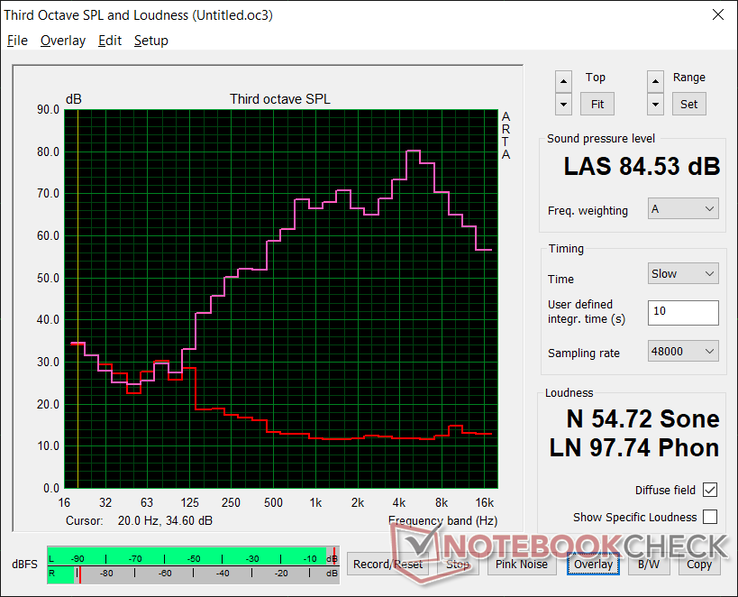
Panasonic Toughbook FZ-S1 audio analysis
(+) | speakers can play relatively loud (84.5 dB)
Bass 100 - 315 Hz
(-) | nearly no bass - on average 23.2% lower than median
(±) | linearity of bass is average (8.5% delta to prev. frequency)
Mids 400 - 2000 Hz
(+) | balanced mids - only 4.8% away from median
(+) | mids are linear (6.5% delta to prev. frequency)
Highs 2 - 16 kHz
(±) | higher highs - on average 6.5% higher than median
(±) | linearity of highs is average (8.8% delta to prev. frequency)
Overall 100 - 16.000 Hz
(±) | linearity of overall sound is average (20.3% difference to median)
Compared to same class
» 58% of all tested devices in this class were better, 7% similar, 35% worse
» The best had a delta of 7%, average was 20%, worst was 129%
Compared to all devices tested
» 52% of all tested devices were better, 8% similar, 40% worse
» The best had a delta of 4%, average was 24%, worst was 134%
Apple MacBook 12 (Early 2016) 1.1 GHz audio analysis
(+) | speakers can play relatively loud (83.6 dB)
Bass 100 - 315 Hz
(±) | reduced bass - on average 11.3% lower than median
(±) | linearity of bass is average (14.2% delta to prev. frequency)
Mids 400 - 2000 Hz
(+) | balanced mids - only 2.4% away from median
(+) | mids are linear (5.5% delta to prev. frequency)
Highs 2 - 16 kHz
(+) | balanced highs - only 2% away from median
(+) | highs are linear (4.5% delta to prev. frequency)
Overall 100 - 16.000 Hz
(+) | overall sound is linear (10.2% difference to median)
Compared to same class
» 7% of all tested devices in this class were better, 2% similar, 91% worse
» The best had a delta of 5%, average was 18%, worst was 53%
Compared to all devices tested
» 4% of all tested devices were better, 1% similar, 94% worse
» The best had a delta of 4%, average was 24%, worst was 134%
Energy Management
Power Consumption
Idling on the minimum brightness level consumes just 2 W on average while increasing the brightness level to maximum will draw 2 W more. The tablet consumes about half of the larger and brighter 10.1-inch FZ-A3 when under similar conditions. Overall power consumption is very similar to the older Toughpad FZ-B2 while offering significantly higher performance-per-watt.
| Off / Standby | |
| Idle | |
| Load |
|
Key:
min: | |
| Panasonic Toughbook FZ-S1 SD 660, Adreno 512, 64 GB eMMC Flash, IPS, 1280x800, 7" | Panasonic Toughbook FZ-A3 SD 660, Adreno 512, 64 GB eMMC Flash, IPS, 1920x1200, 10.1" | Panasonic Toughpad FZ-B2 N2930, HD Graphics (Bay Trail), , IPS, 1280x800, 7" | Durabook R11 i5-8250U, UHD Graphics 620, Kingston RBUSNS4180S3128GJ, IPS, 1920x1080, 11.6" | Acer Enduro T1 ET108-11A A9001 64 GB eMMC Flash, IPS, 1280x800, 8" | |
|---|---|---|---|---|---|
| Power Consumption | -80% | -18% | -291% | 43% | |
| Idle Minimum * (Watt) | 2 | 2.9 -45% | 3.7 -85% | 6.1 -205% | 1.1 45% |
| Idle Average * (Watt) | 4 | 8.6 -115% | 4.2 -5% | 11.7 -193% | 2.2 45% |
| Idle Maximum * (Watt) | 4.2 | 8.9 -112% | 4.3 -2% | 11.9 -183% | 2.2 48% |
| Load Average * (Watt) | 6.7 | 9.4 -40% | 6.9 -3% | 37.7 -463% | 3.6 46% |
| Load Maximum * (Watt) | 9.9 | 18.5 -87% | 9.3 6% | 50.5 -410% | 6.7 32% |
* ... smaller is better
Battery Life
| Panasonic Toughbook FZ-S1 SD 660, Adreno 512, 20 Wh | Panasonic Toughbook FZ-A3 SD 660, Adreno 512, 24 Wh | Panasonic Toughpad FZ-B2 N2930, HD Graphics (Bay Trail), 24 Wh | Durabook R11 i5-8250U, UHD Graphics 620, 43 Wh | Acer Enduro T1 ET108-11A A9001 Wh | |
|---|---|---|---|---|---|
| Battery runtime | |||||
| WiFi v1.3 (h) | 16.5 | 7.6 -54% | 5 -70% | 5.7 -65% | 15.6 -5% |
Pros
Cons
Verdict
As a standalone 7-inch tablet, the Toughbook FZ-S1 feels thinner and lighter than we had initially expected. Its bumpy back actually makes it easier to grip than most other tablets while the modern Android 10 software offers a smoother and cleaner user experience not unlike a consumer device. We also appreciate the move to USB-C and that the display doesn't suffer from the same flickering issues we observed on the FZ-A3.
Base characteristics like portability and performance are worth praising. A couple of changes and additions to make it more like the FZ-A3 would have made the FZ-S1 even better.
There's still a lot we would like to see improved on the FZ-S1 especially after experiencing the larger FZ-A3. Firstly, the battery on the FZ-S1 is difficult to swap for users with larger hands. Its latches and handles are way too small and so we found our fingers sliding over them constantly. Secondly, it's a shame that the connected accessories are not compatible with other Panasonic Toughbook devices. Universal compatibility of accessories across different Toughbook models would give a better sense of cohesion within the product family. Thirdly, we would love to see programmable buttons similar to what is available on the FZ-A3 for an added layer of customization. And lastly, Glove mode or Rain mode sound great on paper, but the touchscreen will often not register user inputs when the mode is active. An integrated stylus and/or recess would go a long way to improving the usability of the FZ-S1 especially when precision inputs are important.
Price and availability
Companies can request quotes and prices directly from Panasonic.




